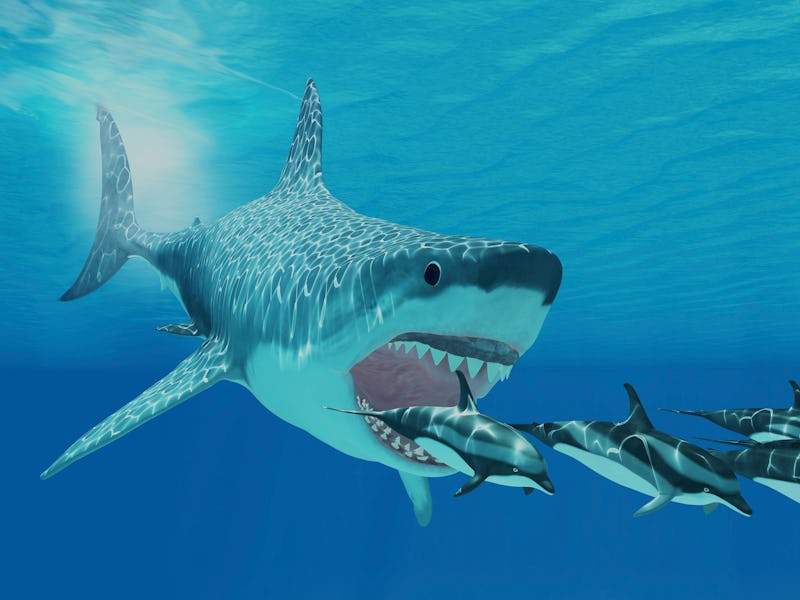Massive, prehistoric sharks' weird evolution led to their demise — study
The feeding strategy that helped Ptychodus likely caused their extinction.

Whether you find sharks more fascinating or frightening, new research reminds us of an undebatable truth: These aquatic hunters used to be way more terrifying. Terrifying as in: nearly 32 feet long, limber, and sporting teeth that constantly grow back.
The 23 members of the ancient, massive shark genus Ptychodus went extinct around 85 million years ago. A new study presents a fresh theory as to why: Their hunting strategy was both an important evolutionary adaptation and the reason they eventually died out.
This finding was published Wednesday in the journal PLOS ONE.
Analyzing two large shark vertebrae discovered in Spain, researchers discovered that these sharks had a unique combination of features that allowed them to hunt prey during the Late Cretaceous period: They were born via live birth, grew slowly, and matured late. As a result, their population thrived, fluctuating around the maximum capacity for their environment.
But in the long run, those traits didn't pay off for ptychodontid sharks. These traits, along with the fact that these big sharks had small liters, made them more vulnerable to environmental changes.
"These traits combined with a highly specialized feeding ecology might have played a crucial role for the success but also, eventually, extinction of this group," write the study authors.
Remains of the ancient shark were found in Spain.
Ptychodontid sharks were huge, growing as large as 32 feet long. That's about where today's massive whale sharks top out. While fossils of these sharks have turned up around the world in deposits from the Cretaceous period, the new study presents something novel: It's the first finding of articulated shark remains from the Santonian period discovered in Spain.
Since shark teeth are constantly regenerating, much of the fossil record is made up of single teeth, the researchers explain. One tooth can only provide so much data, so having a sample of the sharks' central vertebrae allows for new discoveries.
The researchers were able to infer new details about these sharks' growth patterns by looking at their bones, which would deposit a new layer, or ring, as the sharks aged and grew — and grew.
Scientists estimate the minimum and maximum size of ptychodontid, based on fossils found in Spain.
Tale as old as time — Shark evolution is a long and still-changing story that's been going on for 400 million years, so these marine powerhouses have seen a lot of changes.
The new research gives insight on how to conserve shark populations in the future, the researchers explain:
"The application of life-history traits has proven potentially useful in fisheries to determine if stocks are endangered and to estimate their chances to recover."
Abstract: Due to their cartilaginous endoskeleton and the continuous tooth replacement, the chondrichthyan fossil record predominantly consists of isolated teeth, which offer diagnostic features for taxonomic identifications, but only provide very limited information of an organism’s life history. In contrast, the calcified vertebral centra of elasmobranchs (sharks, skates and rays) yield important information about ecological and biological traits that can be utilized for constructing age-structured population dynamic models of extant species and palaeoecological reconstructions of such aspects in extinct groups. Here, we describe two large shark vertebrae from the Santonian (Upper Cretaceous) of Spain, which show a unique combination of characters (asterospondylic calcification pattern, with concentric lamellae and numerous parallel bands that are oriented perpendicular) that is only known from ptychodontid sharks, a distinct, extinct group of giant durophagous sharks of the Cretaceous era. Based on linear regression models for large extant sharks a total length between 430 and 707cm was estimated for the examined specimen. Our results indicate that ptychodontid sharks were large viviparous animals, with slow growth rates, matured very late and, therefore, show typical traits for K-selected species. These traits combined with a highly specialized feeding ecology might have played a crucial role for the success but also, eventually, extinction of this group.